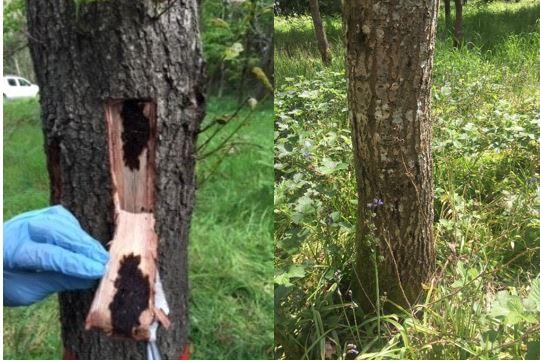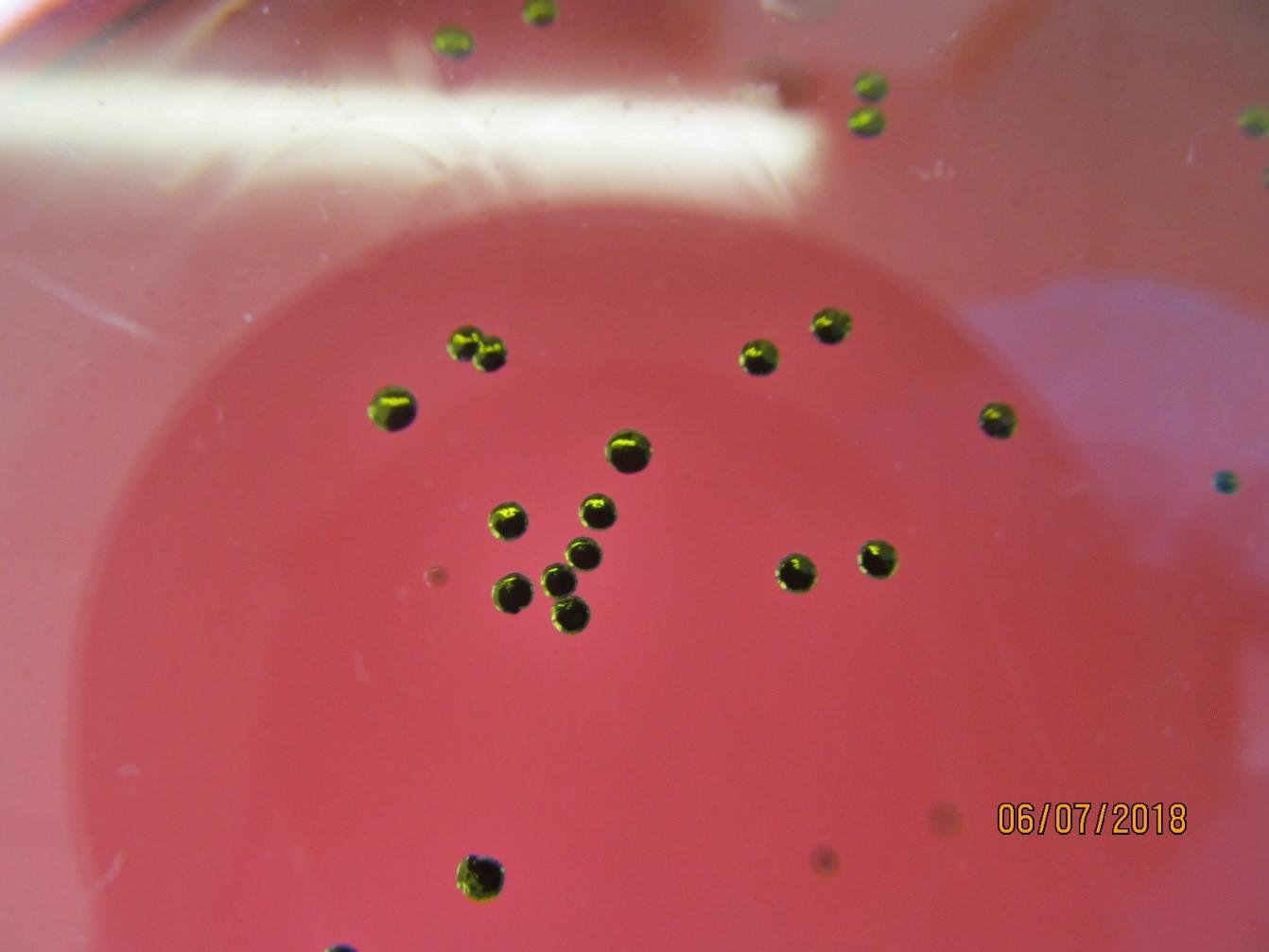Linking soil and tree health, and pathogen ecology

The Microbiology Society is undertaking a project entitled A Sustainable Future as part of our 75th Anniversary, which aims to highlight the Sustainable Development Goals (SDGs) to our members and empower them to use their research to evidence and impact the goals. Earlier this year, we put a call out to our members to submit case studies in the following three areas: antimicrobial resistance, soil health and the circular economy.
This case study is written by Bethany Pettifor who is a PhD researcher at Bangor University, Wales and a member of the Microbiology Society. It focuses on Soil Health; maintaining the health of our soils has gained increasing prominence in recent years. Soils are essential for the global food system and regulate water, carbon and nitrogen cycles but are put under pressure from population growth and climate change.
What are the challenges/needs that this research addresses?
Forest health and sustainability has been an increasing global concern in recent years. Trees are increasingly susceptible to pests and diseases, and with an increase in international trade paired with a rapidly changing climate, the risk of new infections and infestations has also increased, leading to both socio-economic and environmental impacts. Soil condition is a key factor in tree health and disease development. For example, the lack of essential nutrients and sub-optimal water capacity can cause weakening of the tree. A healthy and diverse soil microbiome is crucial for tree health and control of pathogen density, helping to protect the tree from soilborne pathogens. In disease development, soil (as well as rainwater) can act as an environmental reservoir for many plant pathogens, allowing pathogens to survive between hosts, and facilitate the spread of disease.
Acute oak decline (AOD) is a decline disease, caused by a complex of potential abiotic and biotic factors which, over the last two decades, has dramatically increased in prevalence in the UK. AOD is a disease characterised by a rapid decline in tree health and vigour, symptoms including the larval galleries and exit hole of a bark boring beetle, and cracks and necrotic lesions in the inner bark tissue, associated with several species of bacteria acting in parallel. Two novel species were found to be key players in tissue degradation within these lesions, Gibbsiella quercinecans and Brenneria goodwinii. Being previously undescribed, their ecology and distribution outside of the oak host was unknown.
Using a combination of agar-based colony counts and gyrase B targeted quantitative PCR (qPCR), rainwater and forest soil microcosms, spiked with these bacteria, were measured for bacterial decay over a two to three-month period. This research aimed to determine if these bacteria had the ability to survive outside of the oak host in rainwater and forest soil, two common environmental reservoirs for pathogens in a forest ecosystem.
What findings and solutions were provided by this research/incentive?
This research provided evidence that G. quercinecans has the ability to survive, and remain viable outside of the oak host, in both forest soil and rainwater. This indicates that G. quercinecans could have a broad ecological distribution in forest ecosystems. B. goodwinii however, did not remain viable when in forest soil or rainwater. This indicates that B. goodwinii may not have an ecological distribution outside of the oak host. Interestingly, B. goodwinii DNA was detectable in forest soil throughout the experiment, suggesting a potential viable but non-culturable state. B. goodwinii may therefore represent part of the natural microbiome of the tree, lying dormant in the tissues until the tree is weakened, and they can trigger infection, a characteristic which is found in other members of the genus Brenneria. This research has provided answers to one of the key questions on AOD, by illustrating if the key species involved in tissue degradation are able to persist outside of the oak host. It also highlights the importance of soil health in maintaining resilience in oak trees, and for pathogen suppression. The information presented in this study can be used to inform further research, and potential disease management strategies.

How can this research support the transition to a more sustainable future?
The maintenance of healthy forest ecosystems, through the monitoring and improvement of soil health and investigation into disease ecology, is crucial for the transition to a more sustainable future. At a local scale, improved soil health increases resilience of both soil and therefore plant, to climatic events and other changes, however on a global scale, forests are vital for providing key ecosystem services, such as flood prevention, biodiversity maintenance and nutrient cycling. Understanding how plant pathogens persist in the wider forest environment, and how management to improve soil health could supress disease, could be critical in future agriculture and forest ecosystems.

The bacterial strain Gibbsiella quercinecans grows with an iridescent green sheen on Eosin Methylene Blue agar
What is the future for research and innovation in this area?
Research in this area is being led by Forest Research, with the AOD research consortium involving numerous scientists across several institutions throughout the UK. Current areas of study include host-pathogen interactions at various levels, infection biology, epidemiological modelling and the entomology and role of the beetle (which is currently unknown).
Further research in the area should aim to include a more holistic approach to tree health, including analysis at all levels of the interdependent network that is a forest ecosystem. There is potential for using ecological restoration to improve forest health, in order to encourage natural processes in the forest environment. Enhancing the soil microbiome through targeted management practices could help provide a natural resistance to soil-borne pathogens. In AOD, improving microbial soil health could potentially help reduce the spread of lesion-associated bacteria, although more research into the spread of the disease would be required to further understand these complex interactions.
Further reading
Pettifor, B.J., Doonan, J., Denman, S., McDonald, J.E., 2020. Survival of Brenneria goodwinii and Gibbsiella quercinecans, associated with acute oak decline, in rainwater and forest soil. Syst. Appl. Microbiol. 43, 126052. DOI: 10.1016/j.syapm.2019.126052
About the Author
Bethany Pettifor is a PhD researcher at Bangor University, Wales and a member of the Microbiology Society. More information about her work is available here.


